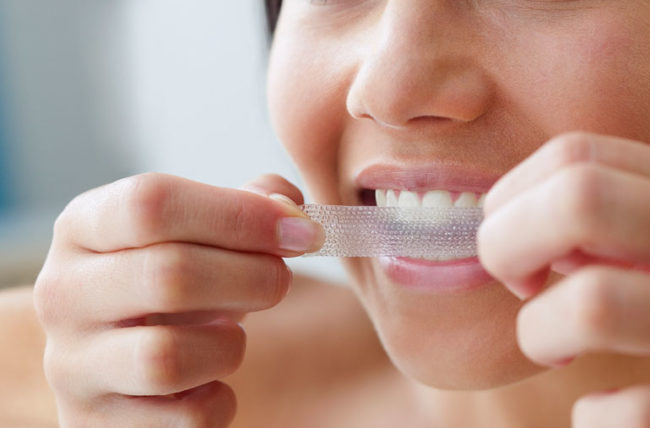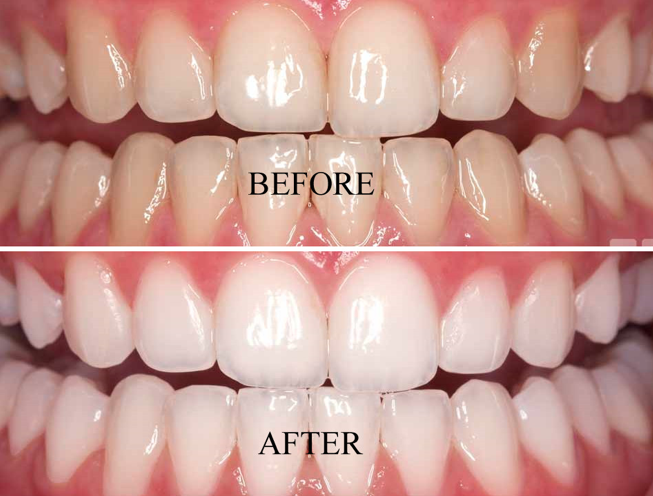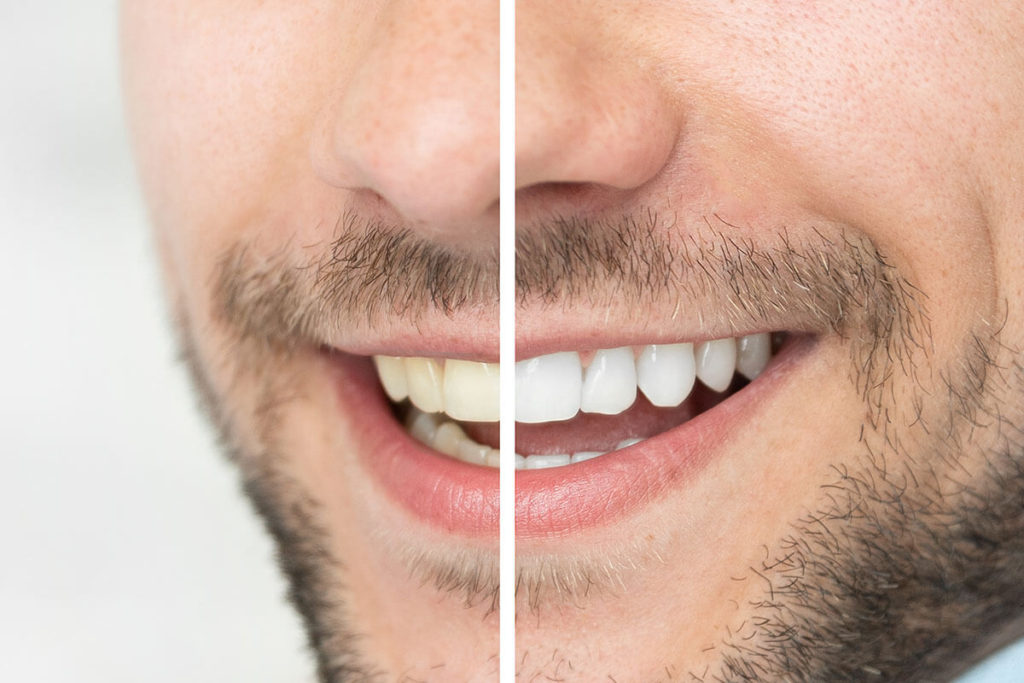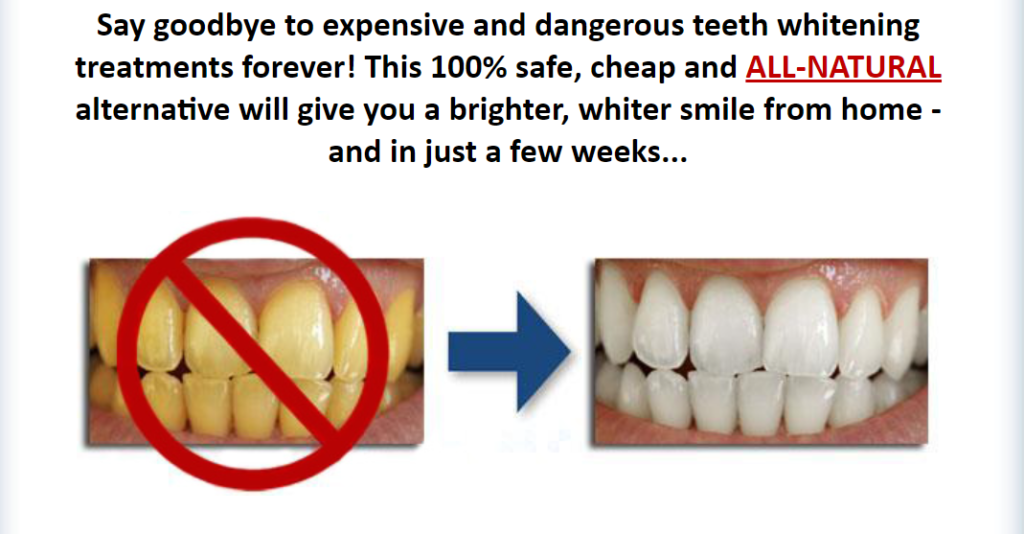Do you want whiter, brighter teeth?
Have dismal gray or yellow stains dulled the shine of your sparkling whites? Teeth stains can form as we age, but some everyday foods, beverages, and even mouthwashes can stain teeth. Do-it-yourself solutions can help whiten teeth, and avoiding stains will help prevent further discolouration. Use these teeth-whitening tips to restore your dazzling smile.
Do-It-Yourself Whitening of the Teeth
You might be able to remove superficial stains on your own. Several at-home tooth-whitening solutions, including kits, strips, toothpastes, and rinses, have been shown to lighten stains. You can also try some old-fashioned cures. To lighten yellow teeth, drugstore tooth-whitening treatments contain mild bleach. Toothpaste removes surface stains with abrasives and chemicals. Deep stains may necessitate the assistance of a dentist.
Kits for Whitening Teeth
A home tooth-whitening kit contains carbamide peroxide, a bleach that can remove deep and surface stains as well as modify the color of your natural teeth. A tooth-bleaching kit can assist if you have coffee-stained teeth. Some kits need you to apply a peroxide-based gel to the surface of your teeth (with a little brush). Other kits have the gel on a tray that molds to the teeth. For a week or more, the tray must be worn daily (for 30 to 45 minutes).
Whitening Strips for the Home
Tooth-whitening strips can help remove stains from your teeth. These strips are extremely thin, nearly undetectable, and coated with a peroxide-based whitening gel. Wear them for a few minutes every day for a week or more. The effects are obvious in a matter of days and endure for at least a year. Strips might not produce as dramatic results as whitening kits, but they are simple to use and virtually foolproof.

Toothpastes and Rinses for Whitening
How can you remove stains from your teeth? Some surface stains can be removed with over-the-counter toothpastes, gels, and rinses. Many of these items are made with mild abrasives, chemicals, or polishing agents. They do not, unlike bleaches, alter the natural color of the teeth.
Teeth Whitener Home Remedies
Some people still prefer using baking soda and a toothbrush to softly whiten their teeth at home. Furthermore, some foods, such as celery, apples, pears, and carrots, produce a lot of saliva, which aids in the removal of food debris from your teeth. Chewing sugarless gum cleans teeth and stimulates saliva production. All that saliva has an added benefit: it neutralizes the acid that causes tooth decay. More saliva is beneficial for your teeth in general.
Dental Work and Tooth Whitening
If you have a lot of dental veneers, bonding, fillings, crowns, and bridges, proceed with caution when it comes to tooth whitening. Because bleach will not lighten these man-made teeth, they will stand out amid your newly whitened natural teeth. You may need to consider new dental work, such as veneers or bonding, to match your brighter teeth.

Teeth Stain Prevention
The outer layer of tooth enamel wears away as we age. Dentin, the underlying layer, is yellower. That is why, especially after whitening, it is critical to strive to avoid staining teeth in the first place. If you avoid meals and drinks that darken your teeth, the effects of whitening might last up to a year. Too much whitening might cause teeth to appear translucent and blue, so you’ll want to keep your new smile.
Don’t use a light to keep your teeth white.
Smoking is not only bad for your health, but it is also one of the greatest offenders when it comes to staining teeth. Tobacco use generates brown stains in the grooves and pits of tooth enamel. Tobacco stains can be difficult to remove simply by brushing. The stains grow more ingrained the longer you smoke. Smoking also causes foul breath and gingivitis (gum disease), as well as increasing the risk of most cancers.
Foods That Stain Your Teeth
Another reason to be cautious about what you consume. Some common foods can cause tooth discoloration. Here’s an easy way to identify if a dish is to blame: Dentists claim that anything that can stain a white cotton T-shirt can also stain teeth. Coffee, for example, stains teeth. Tea, dark drinks, and fruit juices are also among the worst offenders. These dental stains appear gradually and become more visible as we age.
Consider While You Drink
Although they contain disease-fighting antioxidants, a glass of red wine, cranberry juice, or grape juice may easily discolor teeth. That doesn’t mean you should stop drinking them, but remember to rinse your mouth afterward. These aren’t the only meals that can discolor your teeth.

More Foods That Discolor Teeth
The vivid hue of these fruits and vegetables contributes to their nutritious value. However, blueberries, blackberries, and beets all leave a stain on teeth. Eat well for your health and to avoid tooth stains by:
Brushing teeth right after eating.
Using water to rinse your mouth.
Are Sports Drinks Harmful to Your Teeth?
While all sugary drinks are terrible for your teeth, some energy and sports drinks may be even worse, according to a study published in General Dentistry. Researchers discovered that these drinks, as well as bottled lemonade, may damage tooth enamel over time. As a result, the teeth are thin, transparent, and discolored. To avoid tooth erosion:
Don’t sip these drinks for an extended period of time.
When you’re done drinking, rinse your mouth with water.
Medications That Can Cause Teeth Stains
Tetracycline, an antibiotic, causes gray teeth in youngsters whose teeth are still forming. Teeth can be stained by antibacterial mouthwashes containing chlorhexidine or cetylpyridinium chloride. Some antihistamines, antipsychotic drugs, and blood pressure medications, as well as iron and excessive fluoride, can produce tooth discoloration. If bleaching doesn’t work, talk to your dentist about dental bonding, which involves applying a tooth-colored material to your teeth.
Don’t Forget About Daily Upkeep
Brushing is a simple method that can help you keep your teeth white. Brush your teeth at least twice a day. Brush your teeth after every meal and snack. Brushing helps to prevent stains and yellowing of the teeth, particularly at the gum line. Electric and sonic toothbrushes may be more effective than ordinary toothbrushes at eliminating plaque and surface stains from the teeth. Don’t forget to floss and apply an antibacterial mouthwash on a daily basis.
Already tried all these? Already have good habits but want whiter teeth? Have you teeth gone to far and you don’t think you can recover them? Learn the secrets from a Former Dental Nurse by clicking here!


